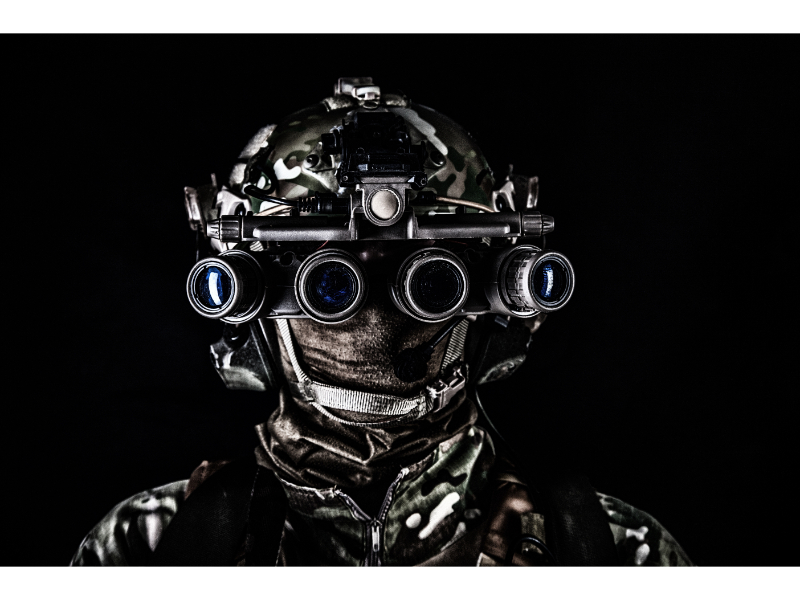Where have you mounted your IR laser? Most lasers usually end up forward on the front top rail, but that’s not the only option. This guide will explore potential placements for an IR light on your rifle. We’ll also briefly discuss issues such as range, zeroing, and point of aim.
A Quick Overview of IR Lasers
Infrared laser illuminators are popular night vision equipment options. Pairable with other night vision devices, IR lasers help sight potential targets. While every IR laser is different, most feature a basic construction:
- Pointer: a zero-able aiming device indicating the Point of Impact
- Cone: illuminator with adjustable coverage
Together, these parts produce an IR beam to detect visible threats. IR lasers are ideal for many purposes: close-quarters battles, sniping, surveillance, and navigation.
Additional applications include using an IR pointer for location marking, signaling to aircraft for extraction of friendly units.
Tips for Placing Your IR Laser
While an IR laser is a popular piece of equipment, proper installation is key to its successful use. Users can mount a laser at 12 o’clock, placing it on the top rail space in the front near the muzzle.
There is a logical reason for this mounting position: Neither the front sight post nor the backup iron sights will block the laser beam. Mounting the laser this way can also be useful if you activate your laser with its native button: You can reach the button with your support hand.
Other shooters typically mount IR lasers on the receiver end of their rifles, placing them directly in front of the visible optic. While this method is less common, it also makes sense. To understand why, let’s look at a few misconceptions about rear-mounting an IR laser.
Myth 1: The front sight post blocks a rear-mounted laser.
Most modern IR illuminator designs have aiming laser offsets placed on the right side. This feature prevents the front sight post from getting in the way.
Moreover, you can adjust the IR flood setting to minimize issues like shadowing. Depending on your objective, a tight beam setting may also be ideal.
Myth 2: Rear placement causes problems with zeroing an IR laser.
If you typically perform live-fire zeroing, you’re probably aiming at a target within a short distance.
However, some shooters find that this process takes too long. Your infrared light range from where the laser sits continues for up to 200 yards or more. Because of physics, bullets you shoot from your rifle don’t behave the same way.
Aiming in advance to 200 yards and then adjusting is a sound alternative to live-fire zeroing.
Using a Pressure Pad
Equipping a pressure switch can make things easier. You don’t need to move your hand from your grip: To activate the laser, simply touch the switch.
You can even install a dual-pressure switch to control multiple accessories.
Choosing Targeting and Night Vision Accessories
The laser industry produces many top-quality target assist and night vision products. Whether you need a vis laser, an infrared model, or another device, Steele Industries has precisely what you need. Shop our selection of lights and lasers now.


